Educational cattle trail - not only muuu!
Family ties
How does a cattle herd work?
- Eating grass, chasing away flies, raising calves – cattle in the herd do all this in common. Only in a group, among themselves, do they feel comfortable and safe.
- The cattle herd is always led by experienced, somewhat older cows – male animals have categorically nothing to say. Mom is the boss here…!
- From approximately the 2nd week of age, the calf joins a group of calves in the herd, which is always supervised by experienced cows or by the bull.


Romeo and Juliet
What does a bull do all day long?
- The short and sweet of it: He makes sure there’s offspring coming! For this, he keeps track of the oestrus cycle of all cows at all times – a job requiring a great deal of attention and dedication.
- A cow in heat emits a scent. With his curled upper lip, the bull can sniff out exactly when the cow’s ovulation occurs – the ideal time for an insemination.
- The bull is very much in love with the cow in heat. Woe to anybody daring to approach his beloved at this moment. They’re immediately chased away – be it another bull, cow or a human being!
Sentinels
How does the herd react to intruders?
- One for all – all for one! As soon as an intruder makes his appearance, the entire herd is all one man to ward off the threat.
- Young animals are particularly vulnerable to falling victim to a predator. They are thus quite well guarded and defended.
- The herd also defends itself against human beings if they come too close and are seen as a potential threat – especially when they’re accompanied by a dog.


Troublemakers
Why don’t cows like dogs?
- Cattle identify our hounds’ forbears: wolves. Even if they no longer look like wolves, their body language and movement patterns are still very similar.
- A cow makes no differentiation between a dog attacking and just wanting to play. If they feel harassed, cattle defend themselves as well as the herd under any circumstances.
- Always keep your dog on a leash short and take a generous detour around the herd. Don’t let your dog bark at the cattle or let it run around them.
Cow whispers
How do cows talk to one another
- Cattle mainly communicate via body language. They express whether they are relaxed or anxious in the position of their heads, their ears or tails.
- If cattle lose contact with the herd, when they’re excited or hungry, they express their feelings through various moo-ing sounds. «Audible» herds are usually disturbed by something.
- The sense of smell also plays a vital role in coexistence within the herd. Animals or human beings who smell strange can be detected from a great distance.
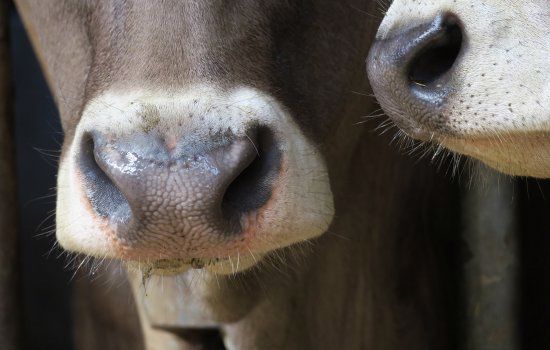
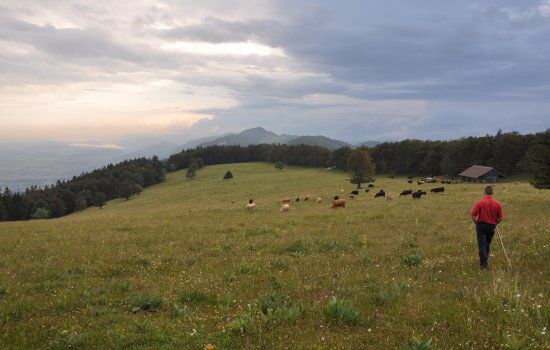
Touch-me-nots
Why do I need to keep distance from the herd?
- We don’t like it either when strangers get too close to us. And a cow feels cornered in the same manner when its individual social distance is breached.
- Watch the herd you come across on the way: Where are the animals? Where are the calves? Where does the hiking trail pass through?
- Choose a possible alternative route to give leeway to the herd. Walk by at a steady pace and avoid intensive eye contact with the animals.
Loophole
When do I need to close pasture gates?
- Leave the pasture gates as you found them: Leave open gates open; closed gates should be reclosed after you have walked through. Discuss these things in hiking groups.
- This also applies to electric fences and other fence throughways that you can operate safely with the insulated plastic handles.
- Only enter the pastures through designated entrances. Don’t crawl under the fence. The herd gets used to people on the official ways.
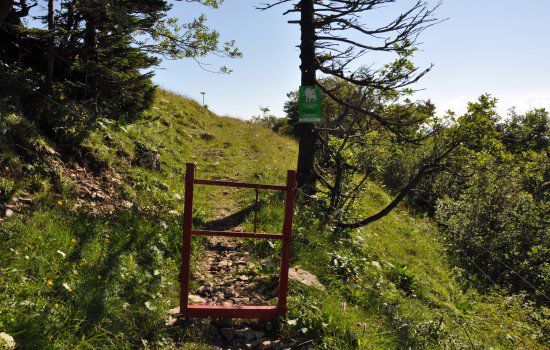
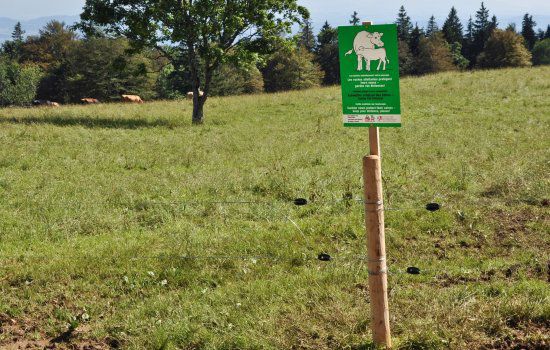
Signs
What are official informational signs?
- For your protection, you will be informed by an official green warning sign at the entrances to pastures about whether cattle herds with young animals are grazing there.
- Even if the animals are not visible at the moment, you can assume there is a cattle herd on the particular pasture. The signs are removed when the animals are absent.
- The green sign was developed and supported as an official warning sign by “Mutterkuh Schweiz” and the Information Centre for Accident Prevention in Agriculture.
Hospitality
Inside/outside the fence – does it make any difference?
- Cattle are quite capable of distinguishing whether you’re standing inside or outside of the fence. They know that the fence contains the herd and protects it from intruders.
- On the pasture, you are the herd’s guest. Just as you don’t crawl through the bathroom window into your friends’ house, you shouldn’t jump over or crawl under the fence to a pasture.
- Don’t let your dog crawl under the fence and run onto the pasture either. Instead, let the dog run free in suitable areas without grazing animals.
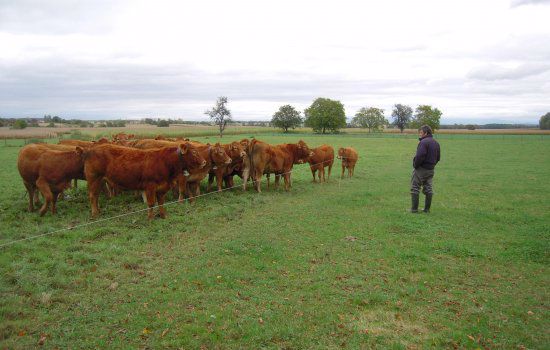
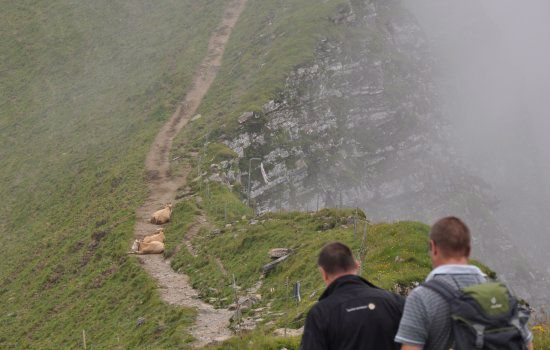
Obstacle
Cows are lying on the grass in my way – what do I do?
- Resting animals watch approaching pedestrians quite closely. They may be startled suddenly and jump up when they feel harassed.
- Take a detour around the herd – if possible, don’t walk between resting animals. If the animals still get alarmed and stand up, increase your distance to the herd.
- In a topographically difficult terrain, use, if possible, the mountain side to take a detour around the herd.
Hide-and-seek
Why are calves lying alone on the grass?
- Often, after giving birth, a cow hides her calf away from the herd to protect it from enemies. The calf doesn’t yet have a characteristic smell, so it’s camouflaged when lying on the grass motionless.
- The mother goes to the calf several times a day to suckle it. After a few days, it will be strong enough to run along with her, and she takes it to the herd.
- If you see an apparently abandoned calf, walk away quickly and calmly, because its mother is keeping a close eye on it. Don’t touch the calf.
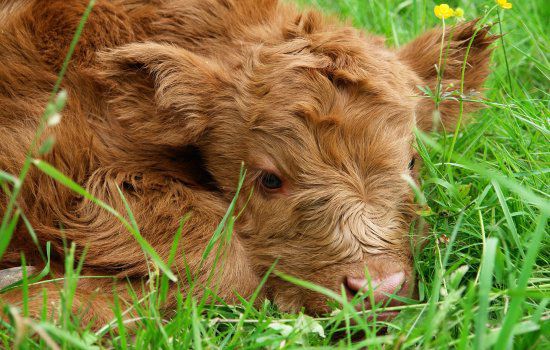
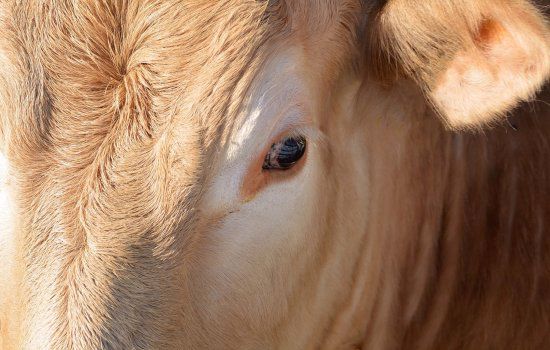
Snail’s pace
Why should I move quietly?
- With their eyes on the side, a cow has an almost all-round view without having to turn its head. Only directly behind it and beneath its nose does it have a blind spot.
- Compared with human beings, a cow perceives even very small movements quite early on and observes them attentively: Could it be a well-camouflaged predator?
- Cattle are ill equipped to assess quick, waving movements that trigger reflex reactions such as flight or attack.
Uh-oh!
What do I do if I get into a hairy situation in spite of all that?
- Withdraw as quickly and calmly as possible. Keep an eye on the herd – but avoid direct eye contact with the animals.
- Don’t run away – it might agitate the animals even more. And you increase the risk of tripping yourself.
- Leave your backpack or jacket lying on the ground – this may deflect the animals’ attention from you a moment.
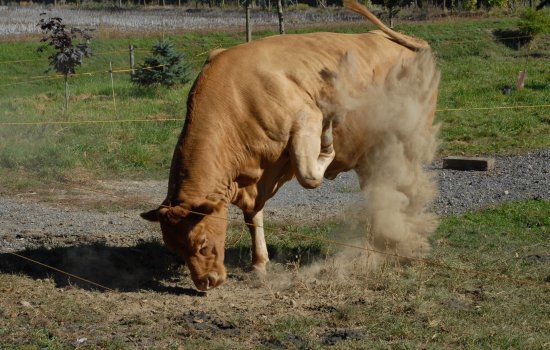
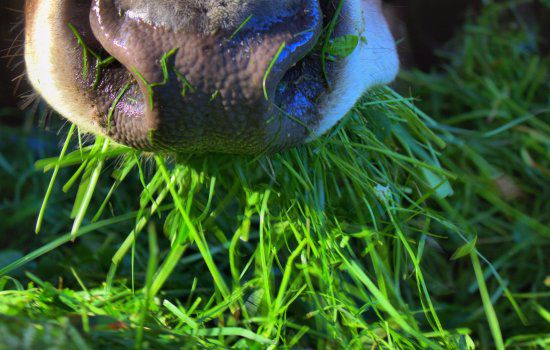
Back pack snack
Why shouldn’t I feed cattle?
- Cows are quick learners – they know, for instance, that people often carry around food in their backpacks. They actually “help” in unwrapping it if people refuse to share a little something.
- Not everything we human beings like to eat is healthy for cows. If the cows’ sensitive digestive system is upset, it will become sick.
- Feeding usually leads to quarrels and feeding envy in the herd, which are then lived out by head-butting. If a human being gets in between, things turn dangerous.
Midwife
What should i do if i see a birth?
- Normally, cows give birth to their calves on their own without difficulties; frequently a bit removed from the herd. At the moment of birth, a cow is obviously defenseless and therefore nervous.
- Don’t disturb the birth-giving – keep a wide distance from it and walk on quietly.
- The livestock owner will check the well-being of the cow and calf at regular intervals.
